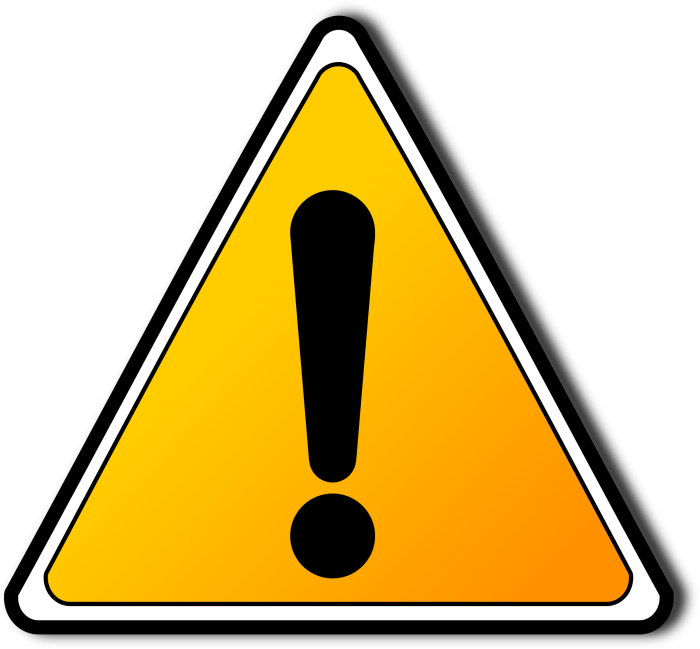Warning you have entered the burnout zone – Warning: you have entered the burnout zone. This isn’t just about feeling tired; it’s a complex issue with emotional, physical, and mental components. We’ll explore the subtle warning signs, delve into the root causes, and discuss effective strategies for prevention and recovery. From recognizing the difference between stress and burnout to seeking professional support, this guide will equip you with the tools to navigate this challenging territory and reclaim your well-being.
The burnout zone isn’t a destination; it’s a process. Understanding its stages, from initial warning signs to full-blown burnout, is crucial for early intervention. We’ll look at the specific factors contributing to burnout, including work-related pressures, personal stressors, and lifestyle choices. We’ll also analyze the impact of burnout on various aspects of life, from physical health to relationships and productivity.
Recognizing the Burnout Zone
Burnout is a state of emotional, physical, and mental exhaustion caused by prolonged or excessive stress. It’s not simply feeling tired; it’s a deeper, more pervasive sense of depletion that impacts various aspects of one’s life. Understanding the warning signs is crucial for taking proactive steps to prevent its progression and seek support. Ignoring these early indicators can lead to more serious consequences, making it essential to recognize the subtle shifts in your well-being.Burnout is characterized by a gradual decline in motivation and energy, alongside a feeling of being overwhelmed and disconnected from one’s work or personal life.
This chronic state differs from everyday stress, which is typically temporary and manageable. Recognizing the subtle shift from stress to burnout is essential for early intervention and recovery. Chronic stress, if left unaddressed, can escalate into burnout, impacting mental, physical, and emotional well-being.
Common Warning Signs
Recognizing the warning signs of burnout is the first step toward preventing its progression. These signs manifest in different ways, encompassing emotional, physical, and behavioral indicators. Pay attention to these subtle changes, as they often precede a more significant crisis.
- Emotional Exhaustion: Feeling emotionally drained, depleted, and unable to cope with daily demands. This can manifest as a constant feeling of sadness, irritability, or apathy, impacting relationships and social interactions. It’s not simply a bad day; it’s a sustained pattern of emotional depletion.
- Depersonalization: Developing a detached or cynical attitude toward work or personal responsibilities. This can involve feeling emotionally distant from others, losing empathy, and experiencing a sense of negativity and indifference towards those around you.
- Reduced Personal Accomplishment: A persistent feeling of inadequacy and a decrease in self-efficacy. This includes doubting your abilities and experiencing a decline in performance and productivity. It’s not just a temporary slump but a consistent pattern of underachieving.
Observable Behaviors
Beyond the emotional symptoms, specific behaviors can indicate the presence of burnout. These actions reflect the internal struggles and coping mechanisms individuals employ when experiencing burnout.
- Withdrawal from social activities: Decreased participation in social events and reduced interaction with friends and family. This can stem from a lack of energy and interest, leading to isolation.
- Increased procrastination and avoidance: A tendency to delay tasks, avoid responsibilities, and postpone decisions. This stems from a feeling of overwhelm and lack of motivation.
- Changes in sleep patterns: Difficulties falling asleep, staying asleep, or experiencing excessive sleepiness. This reflects the impact of stress and emotional exhaustion on physical well-being.
Stress vs. Burnout
Burnout differs from stress in its chronic and pervasive nature. Stress is a normal response to demanding situations, while burnout is a state of prolonged and overwhelming exhaustion. Stress can be managed with appropriate coping mechanisms, while burnout often requires professional intervention.
- Stress is temporary and often arises from specific, identifiable situations. Burnout is a more persistent state of emotional and physical exhaustion, often lacking a clear trigger or cause.
- Stress can be managed through relaxation techniques, time management, and support systems. Burnout often requires more intensive interventions, such as therapy or counseling, to address underlying emotional and psychological factors.
Symptom Analysis
A comprehensive understanding of burnout requires identifying and analyzing its various symptoms. This table provides a framework for evaluating the frequency and impact of these symptoms on daily life.
| Symptom | Description | Frequency | Impact on daily life |
|---|---|---|---|
| Emotional Exhaustion | Feeling drained, lacking motivation, and overwhelmed emotionally. | Daily or multiple times daily | Difficulty concentrating, reduced productivity, strained relationships. |
| Depersonalization | Developing a detached or cynical attitude towards others. | Occasional to frequent | Increased distance from colleagues and loved ones, decreased empathy. |
| Reduced Personal Accomplishment | Feeling inadequate and losing confidence in one’s abilities. | Frequent | Decreased motivation, avoidance of tasks, feelings of failure. |
| Physical Exhaustion | Feeling constantly tired, experiencing aches and pains, and difficulty sleeping. | Daily or multiple times daily | Reduced energy levels, impaired physical performance, susceptibility to illness. |
Identifying the Root Causes: Warning You Have Entered The Burnout Zone

Burnout isn’t a sudden affliction; it’s often a gradual erosion of well-being, stemming from a complex interplay of factors. Understanding these root causes is crucial for prevention and recovery. Recognizing the triggers allows individuals to address the underlying issues, rather than just treating the symptoms. This section delves into common work-related, personal, and lifestyle factors that contribute to burnout.Burnout is a multifaceted problem that requires a multifaceted solution.
It’s not simply about working less; it’s about recognizing and addressing the stressors that lead to this state of exhaustion and emotional depletion. By pinpointing the root causes, we can develop more effective strategies for prevention and recovery.
Work-Related Factors
Work environments can be breeding grounds for burnout. Factors such as excessive workload, unrealistic deadlines, lack of control over work processes, and poor communication contribute significantly to this issue. Employees feeling undervalued or unsupported by their superiors often experience a heightened risk.
- Excessive workload: A constant deluge of tasks, often beyond reasonable capacity, can quickly lead to exhaustion. This can manifest in feeling overwhelmed and unable to prioritize effectively. For instance, a software developer consistently asked to complete projects outside of normal working hours without additional compensation is at increased risk of burnout.
- Unrealistic deadlines: Tight deadlines, especially when accompanied by insufficient resources or support, can induce stress and anxiety. A journalist facing multiple deadlines for different articles with limited time and staff resources may experience this pressure.
- Lack of control: Feeling powerless over decisions regarding work processes and tasks can lead to a sense of helplessness and resentment. A customer service representative with no input into the department’s procedures might feel increasingly frustrated.
- Poor communication: A lack of clarity regarding roles, responsibilities, and expectations can create confusion and uncertainty, increasing stress levels. This can lead to employees feeling like they’re working in the dark.
- Lack of support: Insufficient support from supervisors, colleagues, or the company as a whole can lead to feelings of isolation and vulnerability. An employee in a startup environment who lacks guidance or mentors is at higher risk.
Personal Stressors
Personal life often intersects with professional life, creating a complex web of stressors. Relationships, financial concerns, health issues, and family responsibilities can all contribute to burnout.
Feeling that familiar knot of exhaustion? Warning: you’ve likely entered the burnout zone! To combat that impending slump, why not plan a rejuvenating picnic? Packing the right essentials, like a portable cooler and some delicious snacks, can make all the difference. Check out these 5 useful things for the perfect picnic to help you unwind and re-energize 5 useful things for the perfect picnic.
Even a little bit of fresh air and good company can help push you back out of that burnout zone!
- Relationship issues: Strained relationships, whether personal or professional, can be a major source of stress. Ongoing conflicts or unresolved issues can take a toll on mental and emotional well-being.
- Financial concerns: Financial pressures, such as debt or job insecurity, can induce chronic stress. This can make it difficult to focus on work and personal life.
- Health issues: Dealing with illness or injury can be a significant stressor, impacting both physical and mental health. This can lead to burnout due to the increased demands on time and energy.
- Family responsibilities: Caregiving duties or family obligations can lead to a feeling of being overwhelmed and stressed, especially when work demands are also high.
Lifestyle Choices
Poor lifestyle choices can exacerbate burnout risk. Lack of sleep, poor diet, and insufficient exercise can negatively impact energy levels and emotional well-being.
- Lack of sleep: Chronic sleep deprivation can lead to reduced cognitive function, increased irritability, and a decreased ability to cope with stress. This can contribute significantly to burnout.
- Poor diet: A diet lacking essential nutrients can affect energy levels and overall health. Poor nutrition can make it harder to handle stress and daily demands.
- Insufficient exercise: Regular physical activity can reduce stress and improve mental well-being. A lack of exercise can contribute to stress and emotional exhaustion.
Impact of Poor Work-Life Balance
A significant contributor to burnout is a poor work-life balance. When work encroaches on personal time and space, it can lead to a feeling of being overwhelmed and constantly under pressure.
| Category | Factor | Explanation | Mitigation Strategies |
|---|---|---|---|
| Work-Related | Excessive workload | Overburdened with tasks beyond capacity. | Prioritize tasks, delegate when possible, seek support, and establish clear boundaries. |
| Personal | Financial concerns | Stress and anxiety stemming from financial difficulties. | Create a budget, explore financial aid options, and develop a plan to manage debt. |
| Lifestyle | Lack of sleep | Insufficient rest impacting cognitive function and emotional well-being. | Establish a regular sleep schedule, create a relaxing bedtime routine, and optimize sleep environment. |
| Work-Life Balance | Work-life imbalance | Blurred boundaries between work and personal life, leading to constant pressure. | Establish clear work hours, prioritize personal time, and use technology to disconnect. |
Understanding the Impact
Burnout isn’t just a feeling; it’s a multifaceted issue with far-reaching consequences. The cumulative toll of stress and exhaustion can lead to a cascade of negative impacts on various aspects of life. Ignoring the warning signs and allowing burnout to progress can result in significant damage that is often difficult and time-consuming to repair. This section delves into the detrimental effects of prolonged burnout, emphasizing the importance of recognizing and addressing its impact early on.Prolonged burnout significantly undermines overall well-being.
Its effects extend beyond simple fatigue, impacting physical and mental health, relationships, productivity, and personal/professional goals. The domino effect of burnout can create a vicious cycle, making it increasingly challenging to regain equilibrium and resilience.
Physical Health Issues
Burnout often manifests in physical symptoms as the body’s stress response system is chronically activated. These physical symptoms can range from headaches and muscle tension to digestive problems and sleep disturbances. Prolonged stress can also weaken the immune system, making individuals more susceptible to illnesses. Chronic fatigue and weakened immune response are common indicators of prolonged stress and burnout.
These physical manifestations can significantly hinder daily activities and overall quality of life.
Mental Health Concerns
Burnout takes a significant toll on mental well-being. Individuals experiencing burnout may experience increased anxiety, depression, and feelings of hopelessness. The constant pressure and exhaustion can lead to difficulty concentrating, decision-making problems, and a sense of detachment from life. The inability to cope effectively with daily stressors can contribute to heightened emotional reactivity, further exacerbating mental health concerns.
Relationship Strain
Burnout’s impact extends to personal relationships. Individuals experiencing burnout often struggle to maintain healthy interpersonal connections. Exhaustion and emotional distance can lead to conflict and misunderstandings within relationships. Lack of emotional availability and decreased capacity for empathy and support can strain relationships with partners, family members, and friends. This breakdown in communication and emotional connection can further contribute to the overall feeling of isolation and despair.
Feeling that familiar pressure? That nagging feeling you’ve entered the burnout zone? Maybe it’s time to rethink your approach to learning and productivity. Instead of striving for perfection and 100% completion, consider the benefits of aiming for less than 100, like in why aiming for less than 100 can optimize learning. By accepting that some tasks might not reach a perfect score, you can actually improve your learning process and reduce the stress that often leads to burnout.
It’s a powerful shift in perspective that might just save you from the burnout zone entirely.
Impact on Productivity and Performance
Burnout severely impairs productivity and performance. Reduced energy levels, difficulty concentrating, and emotional exhaustion all contribute to a decline in work output and quality. The inability to focus and complete tasks efficiently leads to increased errors and delays. Burnout can also result in decreased creativity and innovation, hindering progress and achievement. The decreased motivation and diminished cognitive function associated with burnout severely impact professional and personal productivity.
Impact on Personal and Professional Goals
Burnout significantly hinders progress towards personal and professional goals. The loss of motivation and energy can make it challenging to pursue ambitions and aspirations. Individuals experiencing burnout may feel overwhelmed and unable to commit to their goals. This inability to maintain focus and momentum leads to feelings of inadequacy and discouragement. Burnout can disrupt the pursuit of both personal and professional objectives, making it difficult to maintain progress or even to envision future aspirations.
Domino Effect of Burnout
Burnout’s effects aren’t isolated; they create a domino effect impacting various life aspects. Physical health issues, mental health concerns, and relationship strain often feed into each other, creating a vicious cycle. The inability to perform at one’s best in personal and professional spheres further exacerbates the feelings of inadequacy and stress. This cascading effect highlights the importance of addressing burnout early on to prevent its negative consequences from spiraling out of control.
| Area of Life | Impact | Example | Mitigation Strategies |
|---|---|---|---|
| Physical Health | Increased susceptibility to illness, fatigue, and sleep disturbances | Frequent colds, muscle tension, and digestive problems | Prioritizing sleep, adopting healthy eating habits, and incorporating regular exercise |
| Mental Health | Increased anxiety, depression, and feelings of hopelessness | Difficulty concentrating, decreased motivation, and detachment from life | Seeking professional help, practicing mindfulness, and engaging in stress-reducing activities |
| Relationships | Strain on interpersonal connections, conflict, and misunderstandings | Distance from loved ones, reduced communication, and emotional withdrawal | Open communication, setting boundaries, and actively nurturing relationships |
| Productivity | Decreased work output, errors, and delays | Missed deadlines, reduced quality of work, and difficulty focusing | Breaking tasks into smaller steps, prioritizing tasks, and seeking support from colleagues |
| Goals | Difficulty pursuing personal and professional ambitions | Feeling overwhelmed, lack of motivation, and inability to commit | Setting realistic goals, breaking down large goals into smaller steps, and seeking support |
Strategies for Prevention and Recovery
Stepping into the burnout zone is a gradual process, often marked by subtle signals. Ignoring these warning signs can lead to severe consequences, impacting not only your work performance but also your overall well-being. Proactive measures are crucial in preventing burnout and fostering resilience. Recognizing the early warning signs and implementing effective strategies are key to navigating this challenging terrain and regaining control of your life.
Proactive Prevention Strategies, Warning you have entered the burnout zone
Early intervention is vital in preventing burnout. Establishing healthy boundaries between work and personal life is a cornerstone of proactive prevention. This involves scheduling dedicated time for relaxation, hobbies, and social activities, thereby creating a buffer against the constant demands of work. Setting realistic expectations and prioritizing tasks are equally important. Learning to say “no” to additional commitments when overwhelmed is not a sign of weakness, but a demonstration of self-respect and a commitment to well-being.
Recognizing Early Warning Signs and Immediate Action
Monitoring for early warning signs is crucial. These signs can include persistent feelings of exhaustion, irritability, difficulty concentrating, and decreased motivation. When these signs emerge, immediate action is necessary. Taking a step back to reassess priorities, delegate tasks, and seek support from colleagues or mentors can make a significant difference. Taking a short break, even a 15-minute walk, can often alleviate feelings of stress and improve focus.
Practical Tips for Managing Stress and Work-Life Balance
Effective stress management is a cornerstone of preventing burnout. Regular exercise, sufficient sleep, and a balanced diet contribute significantly to maintaining overall well-being. Prioritizing time for self-care, including hobbies, mindfulness exercises, or spending time in nature, is essential for emotional rejuvenation. Establishing a consistent routine, including fixed work hours and dedicated breaks, can greatly improve work-life balance.
Time management techniques, like the Pomodoro method, can enhance productivity while reducing feelings of overwhelm.
Self-Care and Relaxation Techniques
Self-care is not a luxury; it’s a necessity for preventing burnout. Various relaxation techniques can help manage stress and promote mental well-being. Mindfulness meditation, deep breathing exercises, and progressive muscle relaxation are all effective tools for reducing stress and promoting a sense of calm. Engaging in activities that bring joy and fulfillment, such as spending time with loved ones, pursuing hobbies, or engaging in creative activities, is vital for replenishing emotional energy.
Prioritizing activities that promote physical well-being, such as taking walks in nature or engaging in physical exercise, are equally important.
Strategies for Prevention and Recovery: A Practical Guide
| Strategy | Description | Practical Example | Expected Outcomes |
|---|---|---|---|
| Establish Healthy Boundaries | Clearly define work and personal time, creating a buffer between the two. | Set specific work hours, schedule breaks, and allocate time for personal activities like exercise or hobbies. | Reduced stress, improved work-life balance, enhanced focus. |
| Prioritize Tasks | Focus on high-priority tasks first, and delegate or eliminate less important ones. | Use a task management system to categorize tasks by urgency and importance, and delegate tasks when possible. | Increased productivity, reduced overwhelm, better time management. |
| Mindfulness and Relaxation Techniques | Employ techniques to manage stress and promote relaxation. | Practice mindfulness meditation for 10 minutes daily, incorporate deep breathing exercises during stressful periods. | Reduced stress levels, improved emotional regulation, enhanced focus. |
| Seek Support | Don’t hesitate to reach out to colleagues, mentors, or support groups when feeling overwhelmed. | Discuss workload concerns with a supervisor, join a peer support group, or talk to a therapist. | Increased sense of support, reduced isolation, clearer perspective on challenges. |
Seeking Professional Support
Stepping into the burnout zone can feel isolating and overwhelming. Recognizing you need help is a crucial first step towards recovery. Professional support offers a structured approach, providing tools and guidance tailored to your specific needs. It’s not a sign of weakness, but a sign of strength and a commitment to your well-being.
Benefits of Professional Help
Professional support offers a multitude of benefits. It provides a safe and confidential space to explore the root causes of burnout, develop coping mechanisms, and establish healthy boundaries. A therapist can help you identify patterns in your behaviour and thought processes that contribute to stress and burnout. This personalized approach can help you develop strategies for managing stress effectively and preventing future burnout.
Resources and Support Networks
Numerous resources are available to assist individuals navigating burnout. These resources can offer valuable guidance and support, helping you navigate the recovery process. Your primary care physician can be a valuable initial point of contact. They can offer referrals to mental health professionals and provide a crucial first step in accessing support.
- Support Groups: Support groups offer a sense of community and shared experience. Participating in a group setting can provide validation and practical strategies for coping with burnout from others who understand.
- Mental Health Professionals: Therapists, counselors, and psychologists specializing in burnout can offer personalized support and strategies for managing stress, improving resilience, and developing healthy coping mechanisms.
- Employee Assistance Programs (EAPs): Many employers offer EAPs, providing confidential counseling services and resources for employees facing challenges, including burnout. These programs often provide access to therapists and other support services.
- Online Resources: Numerous online resources, including websites and support forums, offer information, tools, and support for individuals experiencing burnout. These platforms can provide access to information and support 24/7, often providing initial guidance before seeking professional help.
Open Communication
Open communication with colleagues and loved ones is essential in managing burnout. Explaining the situation to those around you can foster understanding and support. It’s crucial to communicate your needs and limitations, fostering a supportive environment where you can recover. Sharing your feelings with your loved ones can bring emotional support, practical assistance, and a sense of connection.
Likewise, open communication with your colleagues about your needs can lead to a more supportive work environment.
Role of Therapy and Counseling
Therapy and counseling play a vital role in managing burnout. These approaches offer a structured framework for addressing the underlying causes of burnout. Therapy provides a safe space for exploring emotional patterns, identifying triggers, and developing healthy coping mechanisms. Counseling equips individuals with tools to navigate challenging situations, build resilience, and set healthier boundaries.
Feeling totally drained? That’s a big warning sign you’ve entered the burnout zone. Luckily, there’s a great resource to help you combat stress and reclaim your well-being: check out the lifehack show yoga to combat stress and improve your life with nicole lovald. Nicole’s insights and practical yoga techniques might just be the perfect antidote to get you back on track.
Seriously, don’t ignore those early warning signs of burnout!
Support Resources Table
| Resource Type | Description | Contact Information | Expected Outcome |
|---|---|---|---|
| Primary Care Physician | Initial point of contact for referrals and support. | Your primary care physician’s office. | Referral to mental health professional, initial assessment, and support. |
| Employee Assistance Program (EAP) | Confidential counseling services provided by employers. | Contact your employer’s HR department or designated EAP contact. | Access to therapists, workshops, and resources for stress management. |
| Mental Health Professional (e.g., therapist, counselor) | Personalized support, coping mechanisms, and boundary setting. | Search online directories or ask your primary care physician for recommendations. | Improved emotional well-being, reduced stress, and enhanced coping skills. |
| Support Groups | Shared experience and support from others facing similar challenges. | Search online for local support groups or contact mental health organizations. | Sense of community, validation, and practical strategies for coping. |
Illustrative Case Studies
Burnout isn’t a singular experience; it manifests differently in each individual. Understanding these diverse expressions allows us to recognize the subtle warning signs and intervene effectively. The following case studies illustrate the progression of burnout, highlighting the impact on various aspects of life and the application of recovery strategies.
Case Study 1: The Overachieving Student
Amelia, a highly motivated student, juggled a demanding academic schedule with part-time work and extracurricular activities. Initially, she felt a sense of accomplishment, seeing her dedication pay off with high grades and recognition. However, the relentless pressure started taking its toll. Early warning signs included persistent sleeplessness, irritability, and a loss of enjoyment in previously cherished hobbies.
As burnout progressed, Amelia experienced difficulty concentrating, suffered from frequent headaches, and developed a pronounced cynicism towards her studies. Her social life deteriorated, and she became increasingly isolated. Ultimately, she withdrew from her commitments, experiencing a profound sense of emptiness. Recovery strategies, including setting realistic goals, prioritizing self-care, and seeking support from a therapist, helped Amelia regain her sense of purpose and manage her workload effectively.
Case Study 2: The Dedicated Healthcare Professional
Dr. Chen, a dedicated cardiologist, experienced burnout due to the emotional toll of her profession. Initially, she felt a deep sense of satisfaction from helping patients. However, the mounting pressure of complex cases, long working hours, and the emotional weight of witnessing suffering took a heavy toll. The early warning signs included emotional exhaustion, feelings of detachment from patients, and a loss of motivation.
As burnout worsened, Dr. Chen experienced cynicism and a sense of ineffectiveness. She began neglecting her own health, isolating herself from friends and family, and experiencing a decline in her professional performance. Seeking professional support, including therapy and stress management techniques, and implementing a structured self-care routine, Dr. Chen was able to regain her passion for medicine and cultivate a healthier work-life balance.
Case Study 3: The Driven Entrepreneur
Ethan, a young entrepreneur, poured his heart and soul into building his startup. Initially, the relentless drive and ambition fueled his success. Early warning signs included erratic sleep patterns, neglecting personal relationships, and an overwhelming sense of responsibility. As burnout progressed, Ethan experienced a decline in his decision-making abilities, struggled with concentration, and felt increasingly disconnected from his passion.
He experienced frequent mood swings, and his social interactions became strained. Ultimately, his startup suffered, and he was forced to take a step back. Implementing strategies such as delegating tasks, setting clear boundaries, and prioritizing personal well-being allowed Ethan to regain his focus and reignite his entrepreneurial spirit.
Detailed Description of a Person Experiencing Burnout
A person experiencing burnout appears drained and emotionally depleted. Their energy levels are significantly reduced, and they often feel overwhelmed and unable to cope with daily demands. Their motivation is significantly diminished, and they may exhibit a cynical outlook on life. Physical symptoms such as headaches, muscle tension, and sleep disturbances are common. They may isolate themselves from social interactions, feeling detached and emotionally unavailable.
The person’s cognitive functions are impaired, leading to difficulty concentrating and making decisions. Their previously enjoyed activities lose their appeal, and a pervasive sense of emptiness and hopelessness may consume them.
Organizational Strategies
Organizational strategies play a crucial role in mitigating employee burnout. A proactive approach by organizations to foster a supportive and healthy work environment is essential for employee well-being and productivity. By understanding the impact of organizational factors on employee burnout, companies can implement effective strategies to prevent and address this pervasive issue. This includes not only policies and procedures, but also the subtle nuances of company culture and management practices.
Creating a Supportive Work Environment
A supportive work environment is characterized by a sense of belonging, respect, and trust. Employees should feel comfortable expressing their concerns and seeking help without fear of judgment or reprisal. This fosters a climate of psychological safety, crucial for reducing stress and promoting well-being. Open communication channels and approachable management are vital components of such an environment.
- Promote Open Communication: Establishing clear communication channels ensures employees feel heard and understood. Regular feedback sessions, team meetings, and open-door policies can facilitate dialogue. Creating a culture where concerns are openly addressed and discussed without fear of retribution is essential.
- Encourage Work-Life Balance: Flexible work arrangements, such as remote work options, compressed workweeks, or adjusted schedules, can help employees better manage their personal and professional lives. Implementing policies that recognize and respect the boundaries between work and personal time is crucial.
- Recognize and Reward Contributions: Acknowledging and appreciating employee efforts, both large and small, can significantly boost morale and motivation. Regular recognition, performance reviews that focus on strengths, and opportunities for advancement all contribute to a positive work environment.
Importance of Company Culture
A positive company culture fosters a sense of community and belonging, which in turn reduces stress and promotes employee well-being. A culture that values employee input, encourages collaboration, and prioritizes work-life balance will positively impact employee engagement and reduce burnout.
- Foster a Culture of Respect and Inclusivity: Creating a workplace where all employees feel respected, valued, and included is paramount. This includes actively addressing any instances of discrimination, harassment, or bias. Promoting diversity and inclusion can strengthen team cohesion and support a healthier work environment.
- Encourage Collaboration and Teamwork: Fostering a collaborative work environment where employees can support each other and share ideas can lead to a more fulfilling and less stressful work experience. This can be achieved through team-building activities, collaborative projects, and shared decision-making opportunities.
- Prioritize Employee Well-being: Implementing policies and programs that actively support employee well-being is essential. This could include offering access to mental health resources, wellness programs, and opportunities for professional development.
Management Practices and Strategies for Employee Well-being
Effective management practices play a significant role in preventing employee burnout. Leaders who prioritize employee well-being, demonstrate empathy, and promote open communication are better equipped to guide teams towards a healthier work environment.
- Provide Clear Expectations and Support: Clear expectations and consistent support from managers can reduce ambiguity and uncertainty, decreasing stress for employees. This includes providing clear goals, assigning responsibilities effectively, and offering ongoing guidance and mentorship.
- Encourage Regular Breaks and Time Off: Encouraging employees to take regular breaks and utilize their vacation time is crucial for preventing burnout. Policies that promote this behavior, and visibly encourage it through management example, are critical.
- Delegate Tasks Effectively: Effective delegation empowers employees and reduces the workload of managers. This creates a sense of responsibility and ownership, fostering a more positive work environment.
Organizational Strategies for Employee Well-being
Implementing organizational strategies for employee well-being requires a systematic approach. This involves evaluating existing practices, identifying areas for improvement, and implementing changes that support employee well-being.
| Organizational Level | Strategy | Implementation Steps | Expected Results |
|---|---|---|---|
| Leadership | Establish clear communication channels | Implement regular team meetings, open-door policies, and feedback mechanisms. Provide training on active listening and constructive feedback. | Improved employee engagement, reduced ambiguity, and increased trust in leadership. |
| Departmental | Promote work-life balance | Offer flexible work arrangements, such as remote work options or compressed workweeks. Encourage employees to take breaks and utilize vacation time. | Reduced stress, improved employee satisfaction, and increased productivity. |
| Individual | Provide professional development opportunities | Offer workshops, training programs, and mentorship opportunities to support skill development and career advancement. | Enhanced employee skillsets, increased job satisfaction, and reduced feelings of stagnation. |
| Organizational | Implement a comprehensive wellness program | Offer access to mental health resources, fitness programs, and stress management workshops. Promote healthy habits and well-being through company-wide initiatives. | Improved overall employee well-being, reduced absenteeism, and enhanced employee retention. |
Final Thoughts
In conclusion, recognizing the warning signs of burnout and understanding its multifaceted nature is the first step toward recovery. This guide provides a comprehensive overview of the burnout zone, offering actionable strategies for prevention and recovery, as well as valuable insights into seeking professional help. By understanding the causes and impacts, you can develop a personalized plan to reclaim your well-being and thrive in all areas of your life.
Remember, you’re not alone in this journey, and support is available.










